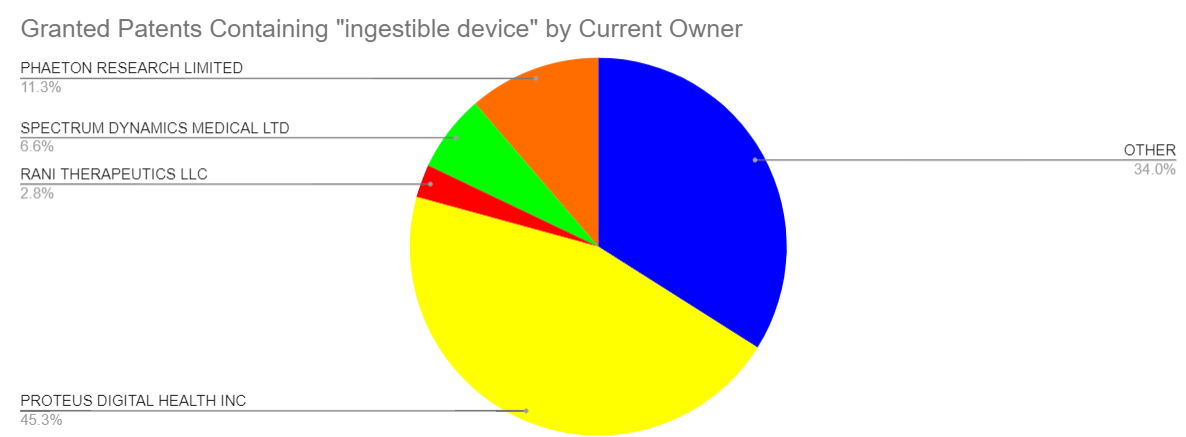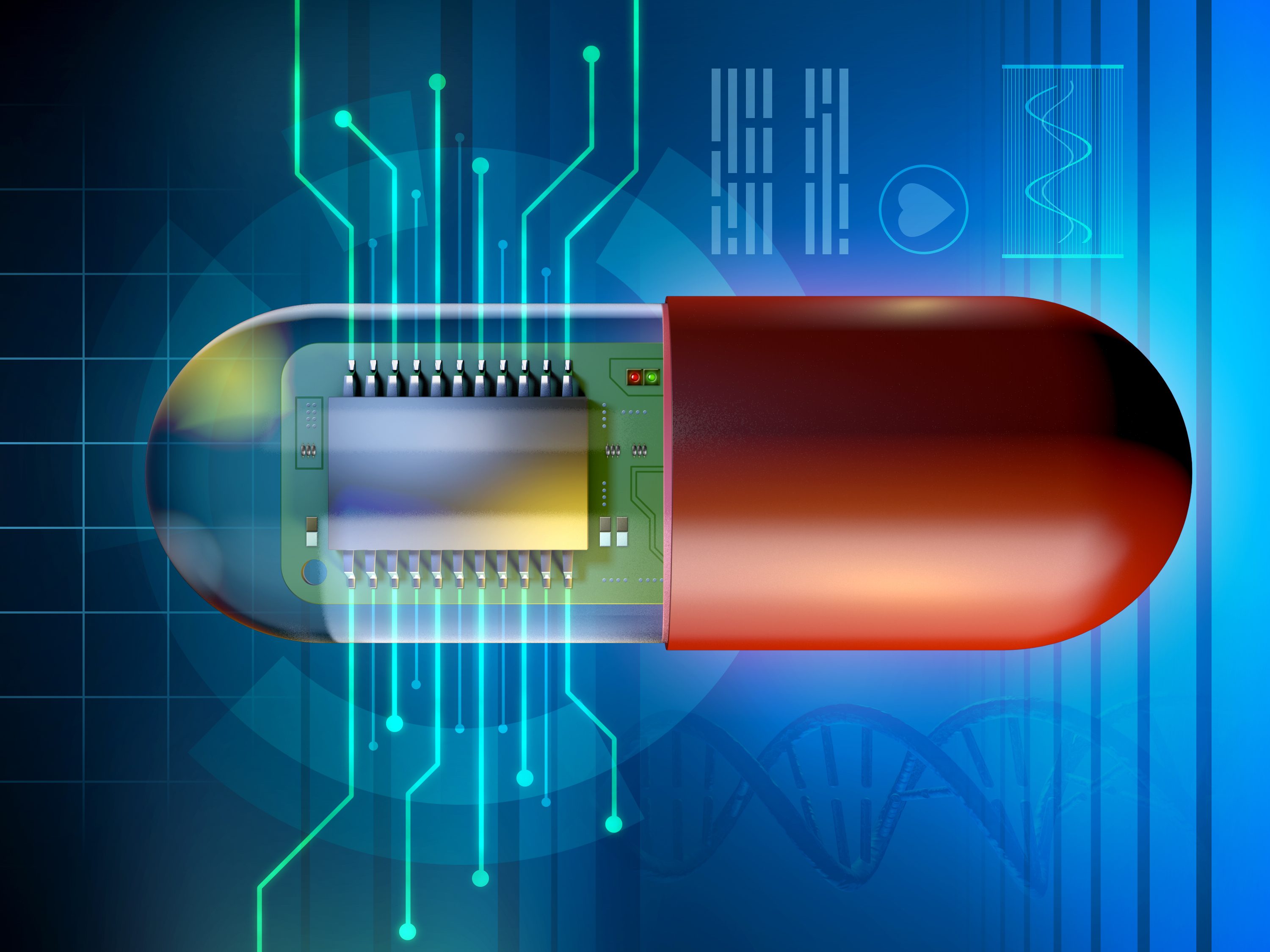Most people don’t think of technology as something that you would eat, but there are a number of inventions that indicate ingestible devices might become more important in the future. While some uses such as capsule endoscopy are already established, others are more recent like the use of sensors to monitor whether patients take their medications on time.
A Hard Pill to Swallow
A quick query in ktMINE’s Search App shows that Proteus Digital Health, Inc. is the top current owner of granted patents containing the term “ingestible device.”
Granted Patents Containing “ingestible device”
 In 2017, Proteus Digital Health in conjunction with Otsuka Pharmaceutical received approval for Abilify MyCite, the first “digital pill” which has a built-in sensor to track patient compliance. Since that time, Proteus has amassed more than 500 issued patents leaving them well-positioned to take advantage of a rapidly growing industry. Grand View Research predicted last year that the global ingestible sensor market could reach $1.99 billion by 2024.
In 2017, Proteus Digital Health in conjunction with Otsuka Pharmaceutical received approval for Abilify MyCite, the first “digital pill” which has a built-in sensor to track patient compliance. Since that time, Proteus has amassed more than 500 issued patents leaving them well-positioned to take advantage of a rapidly growing industry. Grand View Research predicted last year that the global ingestible sensor market could reach $1.99 billion by 2024.
However, consumer privacy advocates are concerned that the data from these devices could be misused, for instance, by insurance companies. Will insurance companies refuse to pay for treatments or readmissions when they have proof of non-compliance? Could hackers make use of this data for stalking or other nefarious purposes?
While monitoring can prove incredibly useful in the medical sphere, it is not the only application of ingestible devices. Researchers from MIT recently developed a capsule that delivers insulin through an injection to the lining of the stomach. Insulin and other large-molecule drugs are notoriously difficult to deliver via the oral route, and insulin usually requires frequent injections which can cause discomfort. However, when insulin is injected into the lining of the stomach, it cannot be felt. This mimics the experience of taking a pill. The benefits are huge for patients that must endure frequent shots or put up with wearing an insulin pump.
Robots
Ingestible devices could also prove useful in the field of soft robotics or building robots from flexible materials. In 2017 researchers from Switzerland presented an actuator (think robot finger) made from gelatin-glycerol material. The actuator is molded into a long caterpillar-like shape that contains chambers where air can flow in. When higher air pressures are applied the actuator bends allowing it to grip objects. Edible actuators could be used in robots that perform specific tasks inside the human stomach such as wound repair, or in robots that monitor and track animals from the inside to aid research into animal behavior and ecosystems. In addition, soft robots made out of candy can transform dessert into a work of art.
Fun and Games
Ingestible tech has even seen uses in areas as far afield as gaming. In 2018 researchers from the Royal Melbourne Institute of Technology developed a game called the “Guts Game” where players swallow a sensor that records the temperature inside their bodies and are then awarded points for doing things that change their internal temperatures in the designated direction.
Outlook
While some of the uses of ingestible tech seen here seem whimsical or nascent, it’s safe to say that ingestible devices are poised to change how we take and think about medicine. Patients with chronic illnesses who need access to large-molecule drugs may no longer have to endure painful regimens that involve sticking themselves with needles, and doctors will be able to tell whether patients have been taking their medicine or if they are fibbing. Whether that will lead to a compassionate conversation about alternatives or a violation of patient privacy that damages the trust of consumers, remains to be seen.





